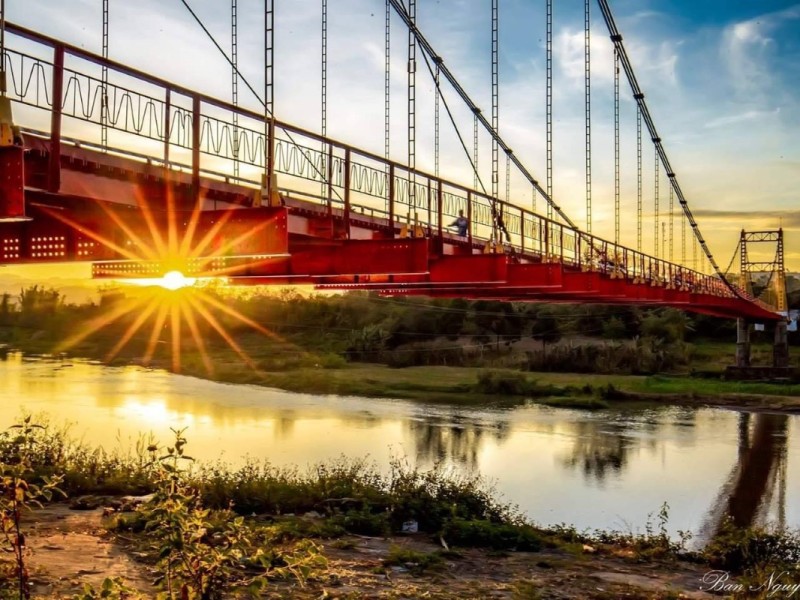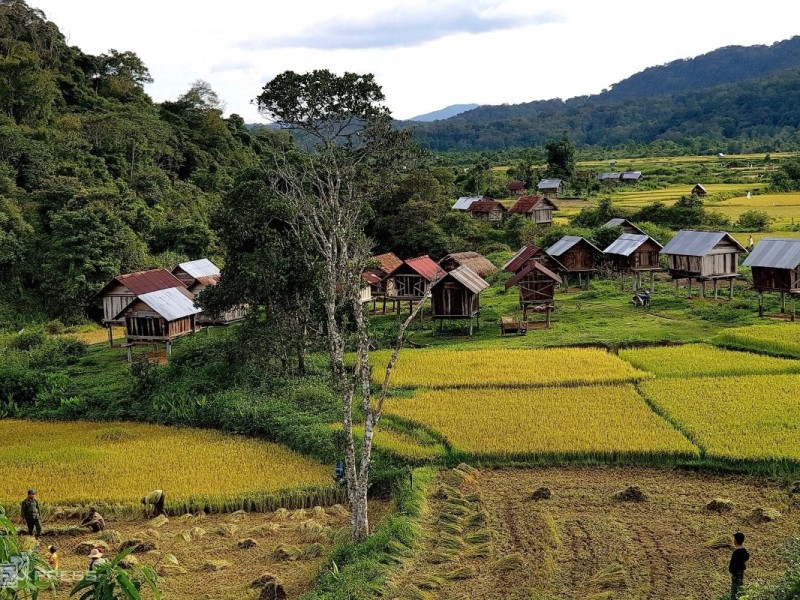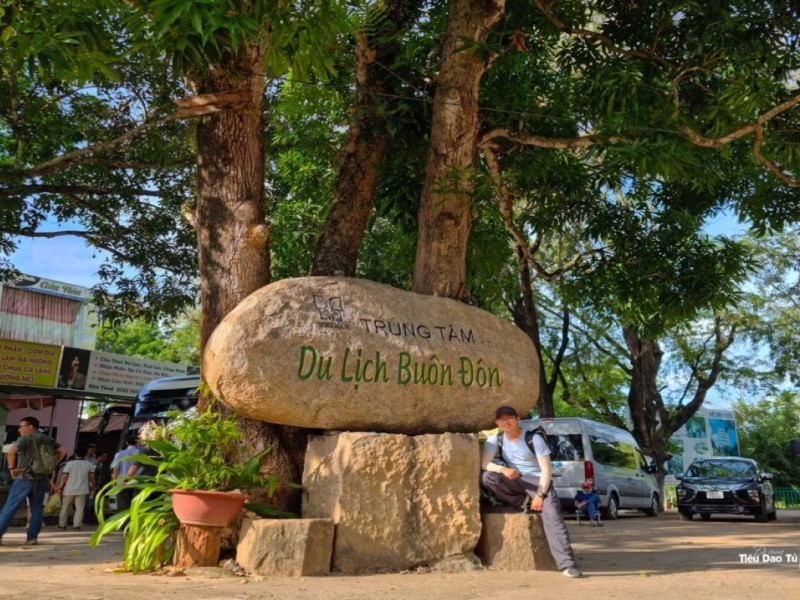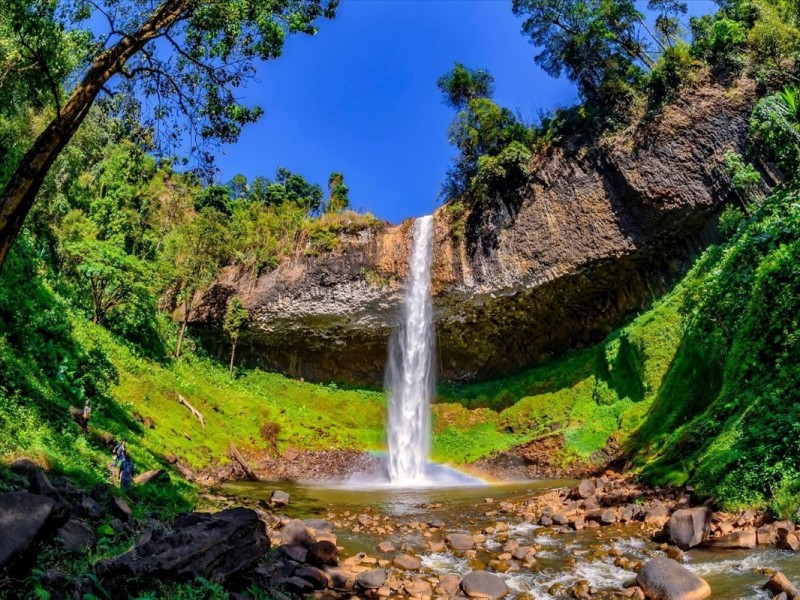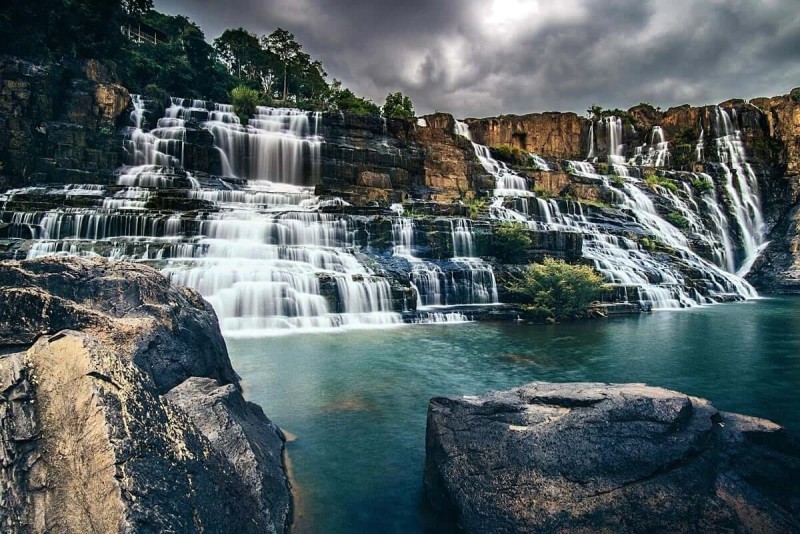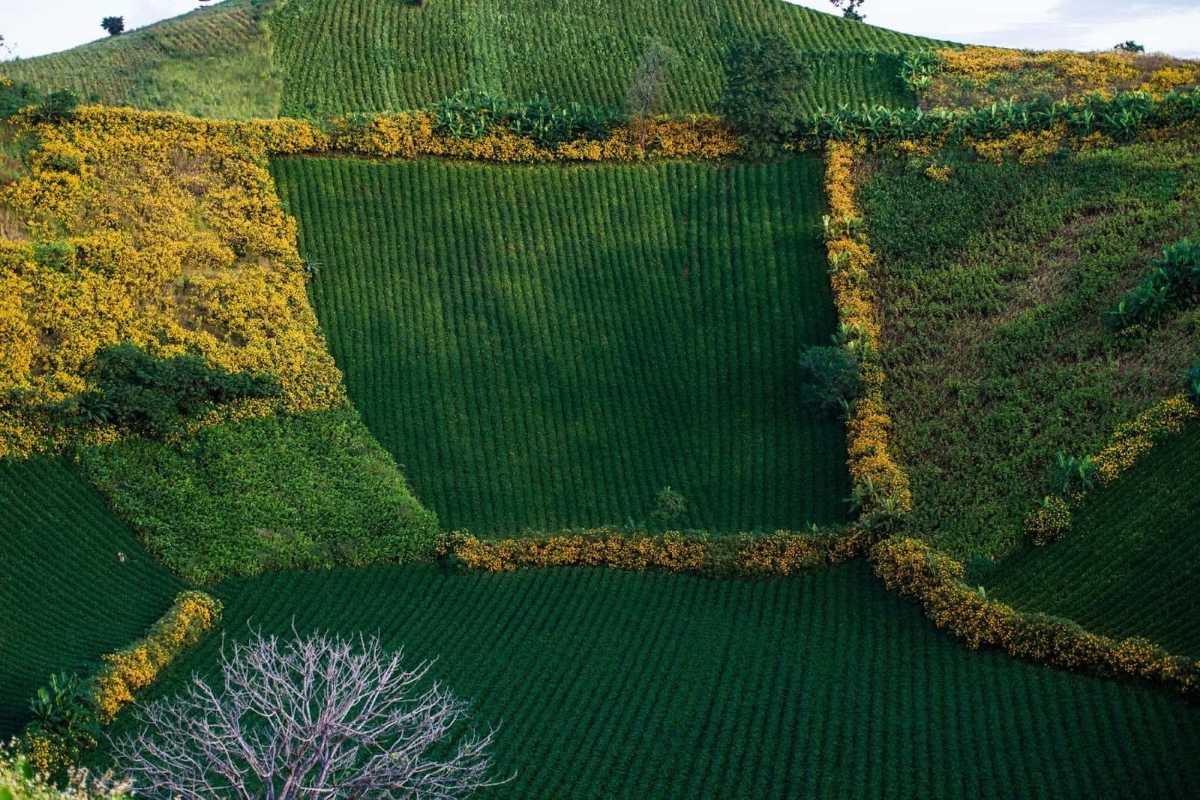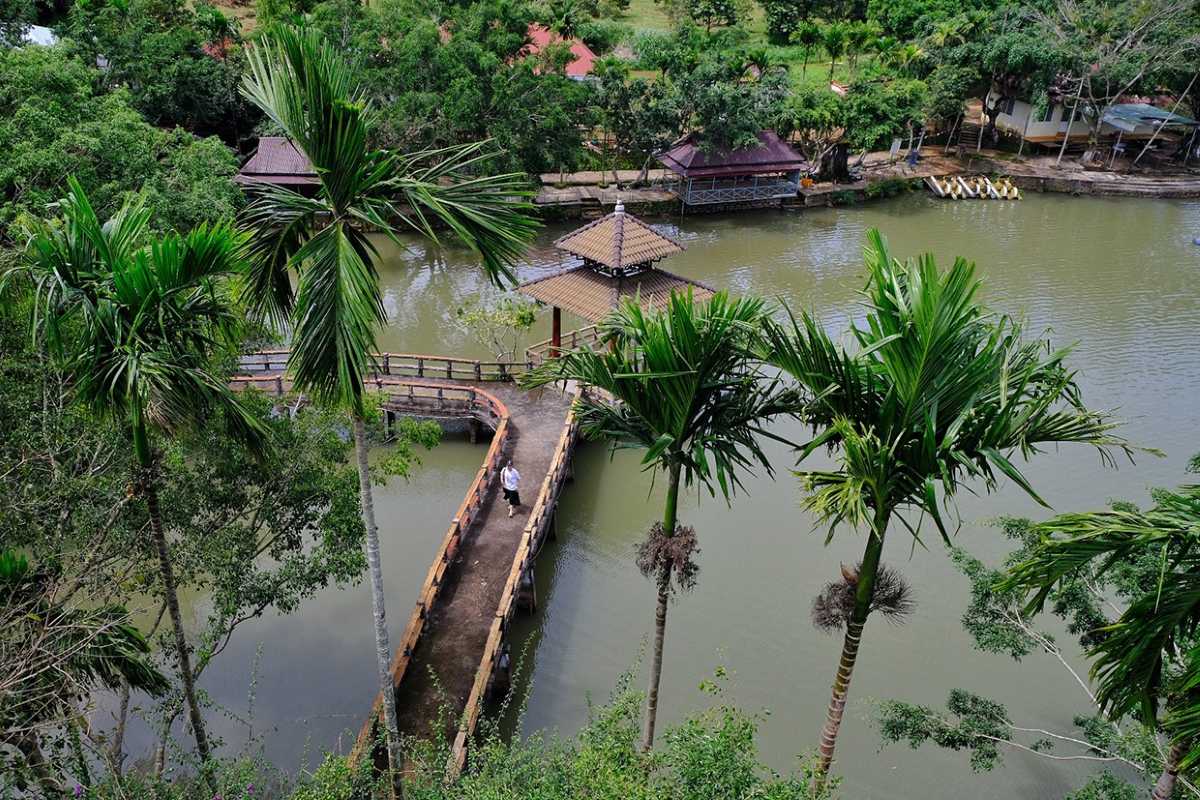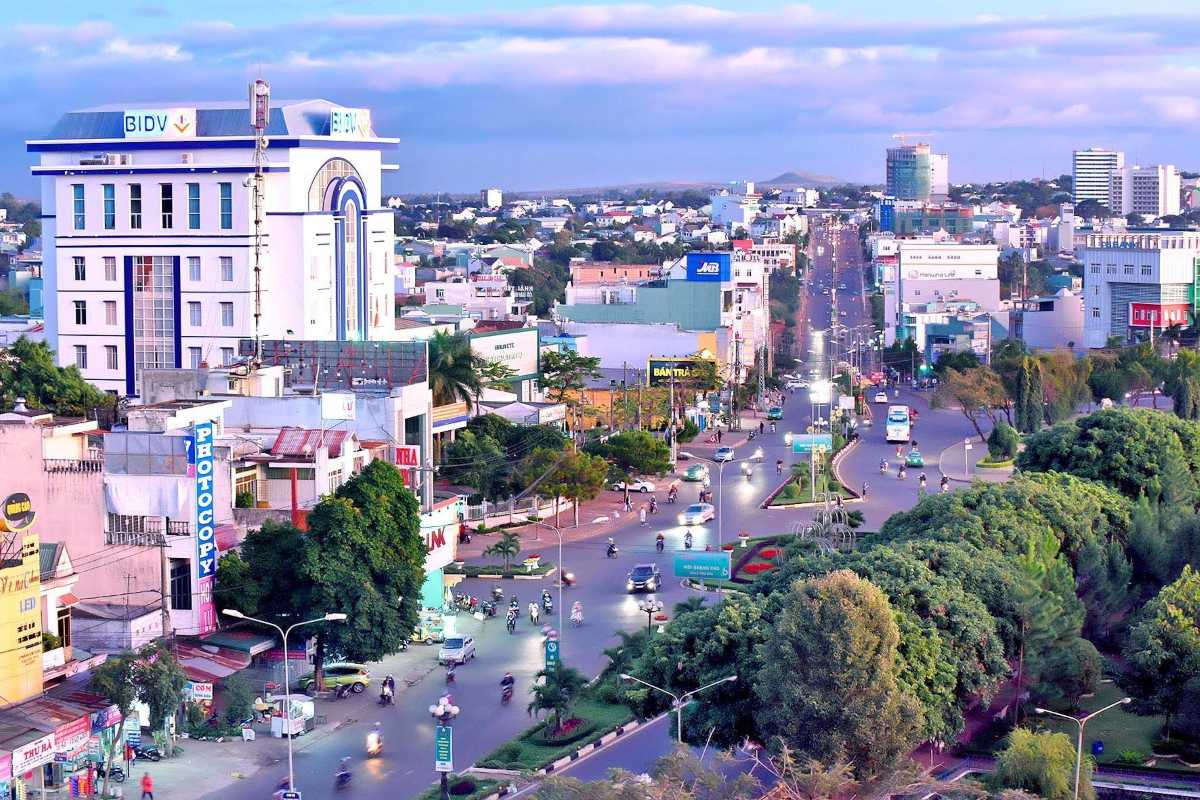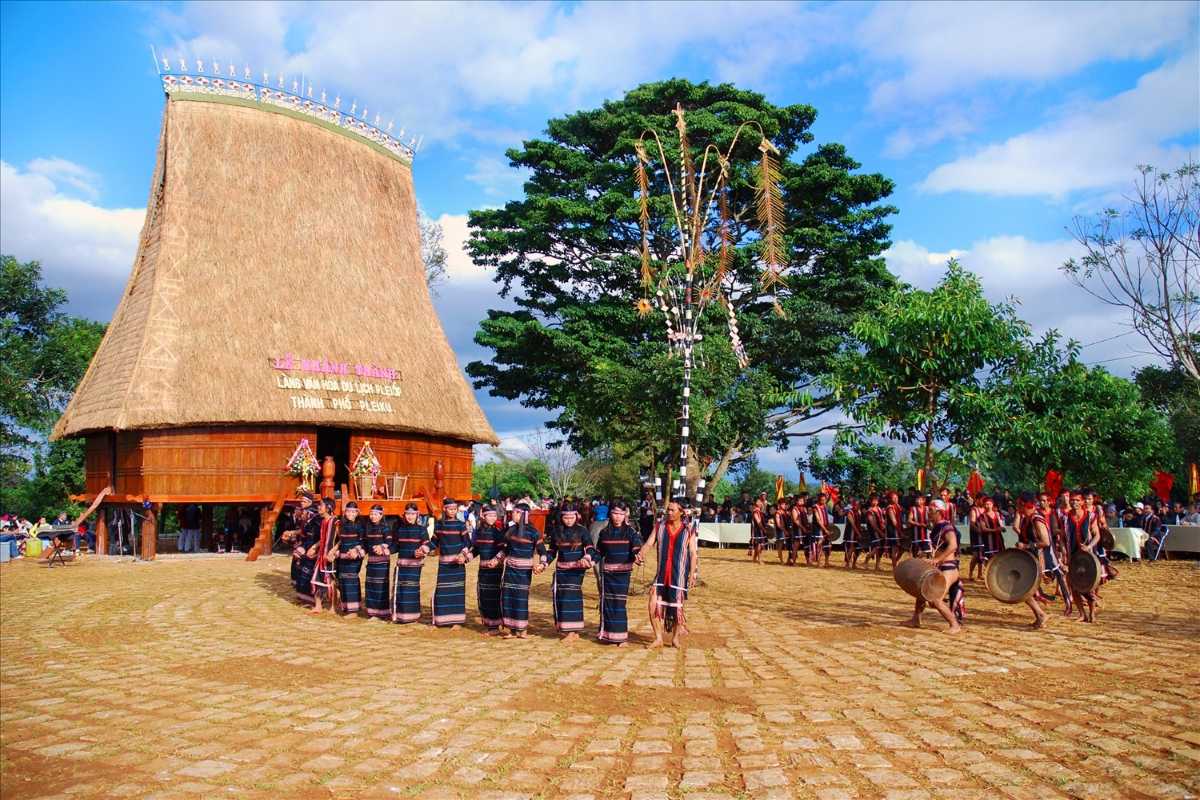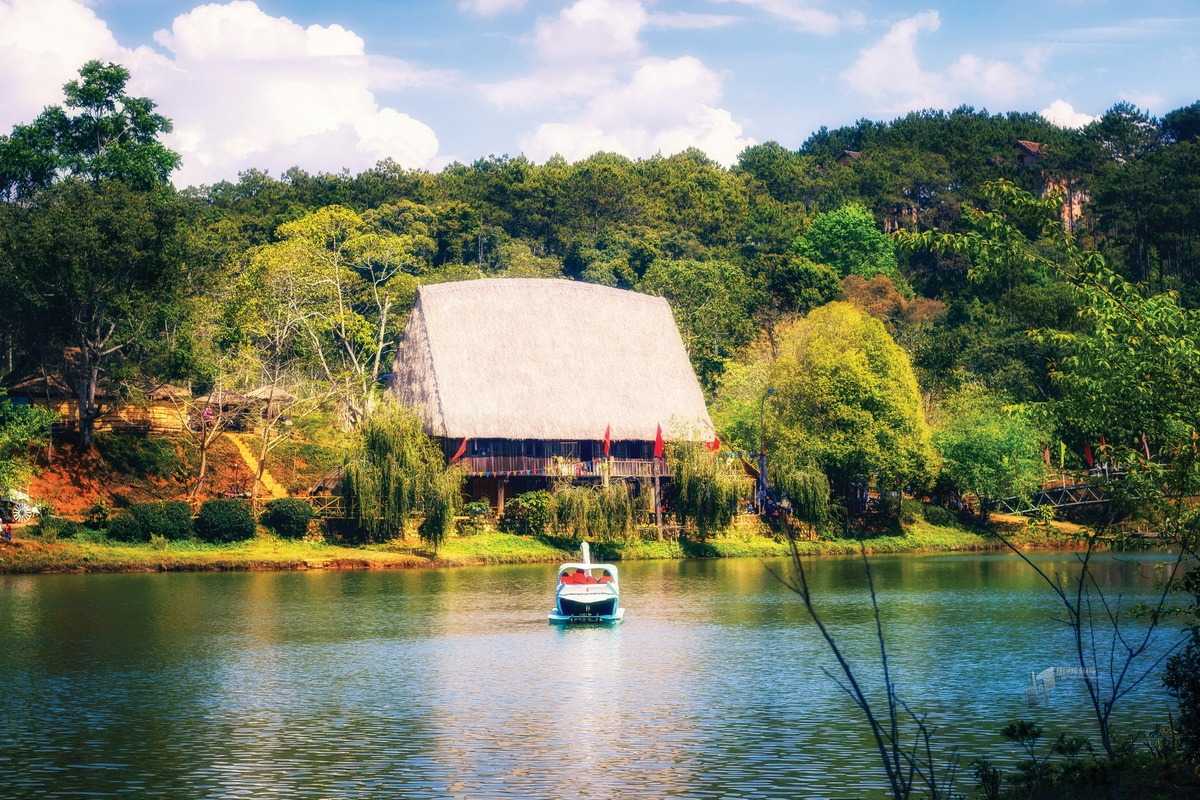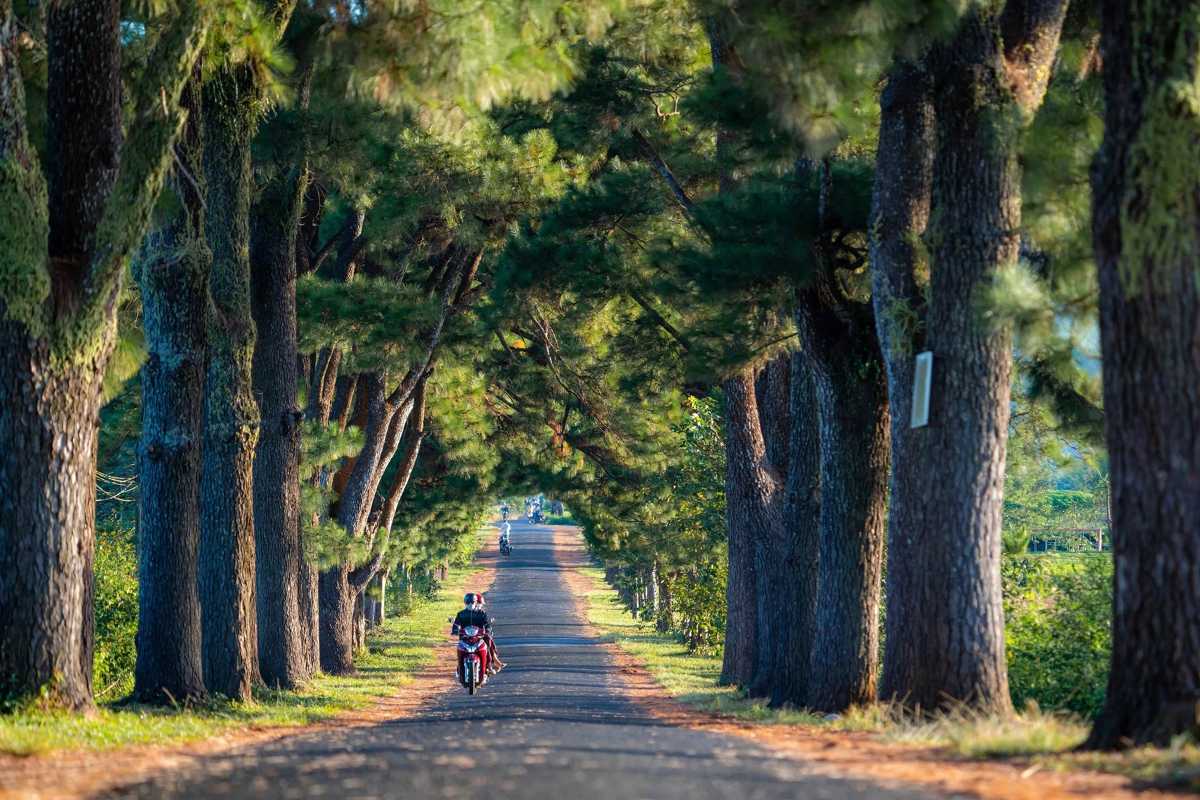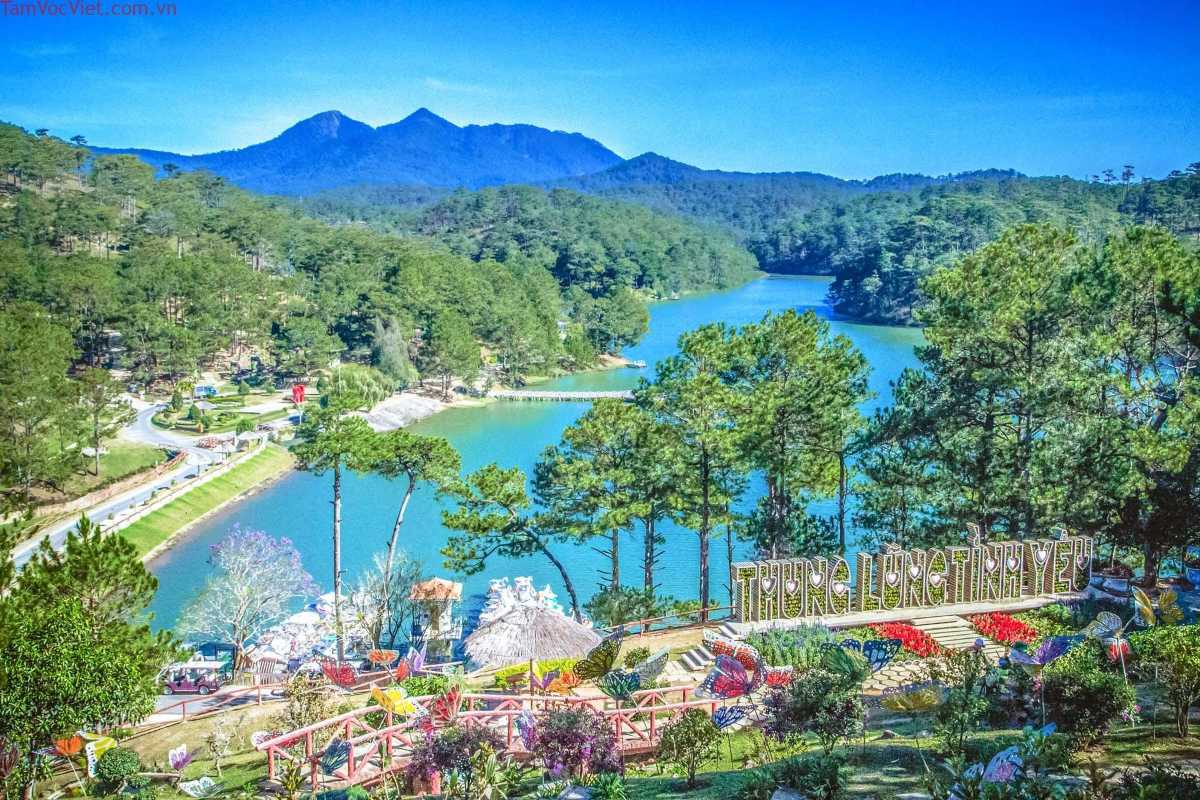Gia Lai: Explore The Hidden Gem of Vietnam’s Central Highlands
Gia Lai is a hidden gem in Vietnam’s Central Highlands, offering stunning volcanic lakes, lush forests, and rich ethnic culture. It features the tranquil T’Nung Lake, vibrant wildflower-covered mountains, and UNESCO-recognized gong traditions, providing a unique blend of natural beauty and cultural heritage.
Overview: Gia Lai Vietnam
If you’re looking to explore a hidden gem in Vietnam’s Central Highlands, Gia Lai offers you untouched natural beauty combined with rich ethnic culture. Located in the highland region of Central Vietnam, this province stands out for its pristine volcanic lakes, lush forests, and vibrant traditions of the Jarai and Ba Na peoples. Here is a concise summary to help you get to know Gia Lai better before your adventure.
- Official Name: Gia Lai Province (Tỉnh Gia Lai)
- Type of Place: Highland province known for natural landscapes, ethnic villages, and eco-tourism
- Location: Gia Lai Province, Central Highlands region, Vietnam
- Unique Appeal: A peaceful, less-touristed highland destination that blends spectacular volcanic lakes and mountains with living indigenous culture.
- Outstanding Features:
- The shimmering volcanic crater lake of T’Nung (Bien Ho), rich in legend and stunning reflections.
- Ham Rong Mountain’s wildflower-covered trails and panoramic views ideal for trekking and photography.
- Kon Ka Kinh National Park’s vast biodiversity with rare wildlife and dense tropical forest.
- Traditional ethnic villages like De K’Tu, where ancient gong culture and stilt houses showcase indigenous heritage.
- Historical sites including Pleiku Prison and guerilla bases that tell stories of Vietnam’s turbulent past.
- How to Get There: Reach Gia Lai via Pleiku Airport with flights from Hanoi, Da Nang, or Ho Chi Minh City; buses and motorbike rentals are common for local travel.
- Visit Duration: Typically 2 to 4 days to explore key natural and cultural attractions comfortably.
- Best Time to Visit: November to April during the dry season; November-December for cultural festivals and wild sunflower blooms.
- Entry Fee: Modest fees apply for national parks and historical sites, usually around a few USD; included in many guided eco-tours.
- Accessibility: Easily accessible by road and air; most attractions reachable by vehicle; some trekking spots require moderate physical ability.
- Top Activities:
- Trekking Ham Rong Mountain for breathtaking views and wildflowers.
- Boat tours on T’Nung Lake to experience its tranquil waters and cultural stories.
- Wildlife and waterfall hikes in Kon Ka Kinh National Park.
- Visiting ethnic villages to witness traditional gong performances and crafts.
- Exploring historical landmarks like Pleiku Prison and Quang Trung guerilla base.
- Responsible Travel Tip: Respect local customs in ethnic villages, especially during festivals, and avoid disturbing wildlife in national parks.
- Fun Fact: Gia Lai’s gong culture is recognized by UNESCO as an intangible cultural heritage, reflecting its spiritual importance to highland communities.
- Visiting Tips:
- Carry small cash for entry fees and local purchases, as many places don’t accept cards.
- Bring insect repellent and comfortable hiking shoes for forest and mountain trails.
- Book guided eco-tours to support conservation efforts and gain deeper cultural insights.
This overview should give you a clear snapshot of Gia Lai’s unique allure and help you prepare for a meaningful and enjoyable visit.
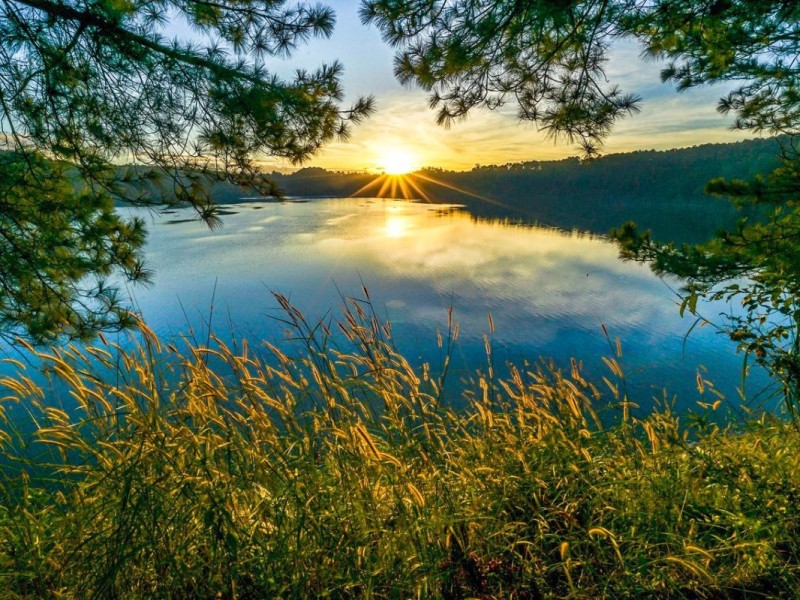
Uncover Gia Lai’s Untapped Natural Beauty
Gia Lai, nestled in Vietnam’s Central Highlands, offers travelers a glimpse into a world untouched by mass tourism, where nature reigns supreme. From the shimmering waters of T’Nung Lake to the towering peaks of Ham Rong Mountain, Gia Lai’s landscapes remain raw and unspoiled, beckoning adventurers, nature lovers, and those seeking solitude. As you wander through the region’s dense forests, rolling tea plantations, and hidden waterfalls, you’ll find yourself captivated by the harmony between nature and the indigenous communities who call this place home. Here, the natural beauty is not just a backdrop, but an integral part of the cultural and spiritual identity of the Jarai and Ba Na peoples. Gia Lai is the perfect destination for those looking to escape the bustling cities and immerse themselves in the pristine beauty of Vietnam's highlands.
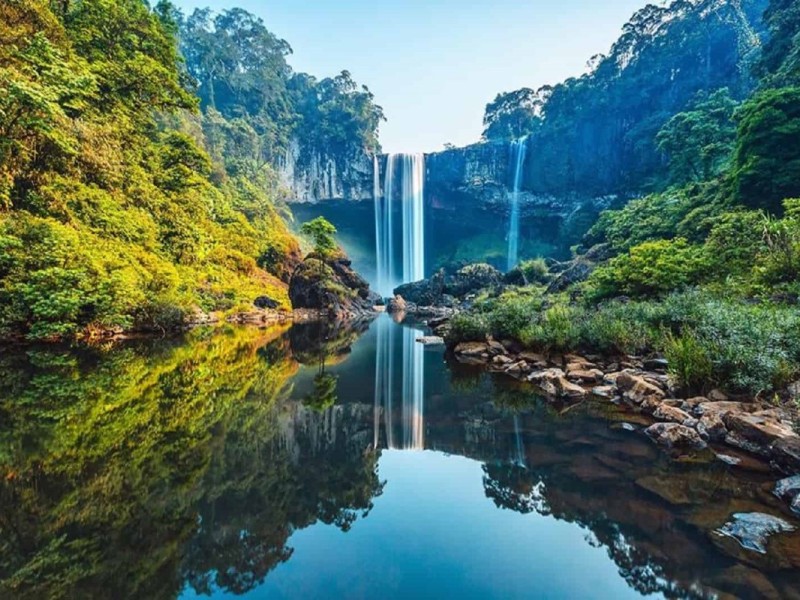
The Natural Wonders of Gia Lai
Gia Lai’s natural landscapes are a feast for the senses. Surrounded by sprawling tea plantations, rugged mountains, and crater lakes, this region offers a rare opportunity to reconnect with nature in its most unspoiled form. T’Nung Lake, also known as Bien Ho, is a stunning example of the area’s pristine beauty, formed in an ancient volcanic crater. Ham Rong Mountain rises above the landscape, its trails lined with vibrant wildflowers and offering panoramic views that stretch for miles. These natural wonders not only showcase the region’s geological history but also its tranquil, meditative appeal.
Visitors often describe Gia Lai as a place of calm and reflection, where one can stand in awe of the highland vistas or take leisurely walks through the tea fields. The region’s biodiversity, especially in places like Kon Ka Kinh National Park, further adds to the allure, making it a top spot for eco-tourism.
The Cultural Significance of T’Nung Lake
T’Nung Lake is more than just a natural wonder; it holds deep cultural and spiritual significance for the Jarai people, one of the primary ethnic groups in Gia Lai. According to local legend, the lake was formed from the tears of a mother who lost her children, making it not only a source of life but also a symbol of sorrow and hope. The Jarai believe that the lake connects the past to the present, and its calm waters represent the eternal balance between life and death. Visitors can explore the lake by boat, gaining a deeper appreciation for the cultural heritage that surrounds this tranquil body of water.

Discover the Best Time to Visit Gia Lai
When planning your visit to Gia Lai, timing is everything. The best time to explore this highland region is during the dry season, which runs from November to April. This period offers the most favorable weather conditions for outdoor activities, such as trekking, cycling, and cultural tours. In November and December, the landscape comes alive with the vibrant hues of wild sunflowers and cassia trees, creating a breathtaking spectacle for nature lovers. From February to March, coffee flowers bloom across the region, filling the air with their sweet fragrance and adding a unique charm to the already captivating surroundings.
Festival Calendar: Cultural Events in Gia Lai
Gia Lai’s cultural richness is best experienced through its many festivals, which showcase the deep-rooted traditions of its ethnic minorities. Among the most significant events is the Central Highlands Gongs Festival, a UNESCO-recognized celebration that honors the region’s gong culture, an essential aspect of the spiritual and cultural life of the Jarai and Ba Na peoples. This festival, typically held in December, features traditional dances, music, and ceremonies, providing visitors with a glimpse into the vibrant cultural tapestry of Gia Lai. Another key event is the New Rice Festival, celebrated in November, which marks the end of the harvest season and gives thanks for the year’s abundance. Visitors during these festivals will not only witness but can also participate in the communal celebrations that bring the region’s history and traditions to life.

Dive Deeper into Gia Lai’s Cultural and Natural Attractions
Gia Lai is a region that invites travelers to immerse themselves in both nature and culture. From its stunning natural landscapes, including T’Nung Lake and Ham Rong Mountain, to its rich ethnic heritage and ancient history, Gia Lai offers a variety of experiences that appeal to adventurers, history buffs, and cultural explorers alike. This section takes a deeper look at some of the most iconic natural and cultural attractions in the region, offering practical travel tips and local insights to help you make the most of your journey.
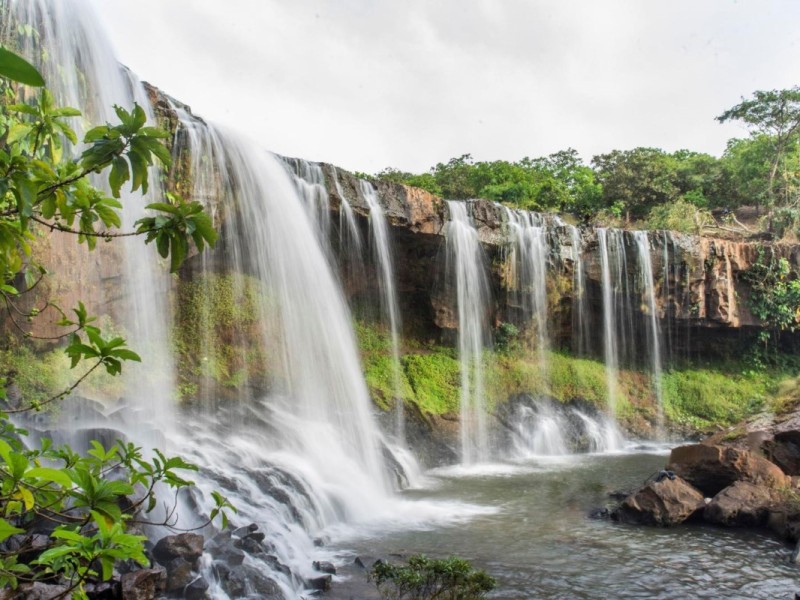
Exploring Gia Lai’s Key Natural Attractions
Gia Lai’s natural beauty is truly unparalleled, offering serene landscapes that provide both adventure and relaxation. Visitors are often drawn to T’Nung Lake, also known as Bien Ho, which stretches across an ancient volcanic crater, creating a tranquil, glassy surface that reflects the surrounding mountains and sky. As you explore this area, you’ll find yourself lost in the breathtaking views of the lake, which local legends say holds a deep connection to the region’s history and culture.
In addition to the lake, Ham Rong Mountain offers a more active exploration of Gia Lai’s natural wonders. Rising above the highlands, the mountain is dotted with wild sunflowers and lush greenery, making it an ideal spot for trekking and photography. Whether you’re an avid hiker or a nature lover, the trails of Ham Rong Mountain provide a peaceful escape from the bustling world, where you can immerse yourself in the serenity of the region’s untouched wilderness.
Trekking Adventures in Kon Ka Kinh National Park
For those seeking true adventure, Kon Ka Kinh National Park is a must-visit destination. Spanning over 42,000 hectares, this ASEAN Heritage Park is a sanctuary for biodiversity, home to more than 500 species of flora and 400 species of fauna, including rare animals like the grey-shanked douc langur and the sun bear. The park’s towering waterfalls, dense forests, and challenging trekking paths make it a paradise for nature enthusiasts.
Trekking through Kon Ka Kinh National Park is an opportunity to witness Gia Lai’s natural beauty up close. The park’s diverse ecosystems provide countless opportunities for exploration, from river crossings to waterfall hikes. As you traverse the trails, you’ll encounter ancient trees, colorful birds, and the sounds of the forest that create an atmosphere of pure tranquility. For those looking for a deeper connection with nature, eco-tours are available, offering guided experiences that highlight the park’s conservation efforts and the importance of protecting its fragile ecosystems.

Explore Gia Lai’s Ancient History
Gia Lai’s history stretches back centuries, and its role in Vietnam’s past is significant. The region was once part of the ancient Champa Kingdom, a civilization that thrived in Central and Southern Vietnam. This strategic location allowed Gia Lai to become a cultural and military hub during various periods, including the Vietnam War, when the region’s highlands were the site of critical battles.
In exploring Gia Lai’s history, visitors gain a deeper understanding of how the region’s past has shaped its present. From ancient kingdoms to colonial resistance, Gia Lai’s historical sites tell stories of resilience, conflict, and the enduring spirit of its people. A visit to these sites not only provides insight into Vietnam’s complex history but also fosters a connection to the region’s cultural heritage.
Key Historical Sites in Gia Lai
Among the most notable historical landmarks in Gia Lai is Pleiku Prison, a relic from the French colonial period and the Vietnam War. This prison held countless prisoners of war and political dissidents, making it a powerful reminder of the region’s turbulent past. Visitors to the prison can explore the preserved cells and learn about the harrowing conditions faced by those who were imprisoned here.
Another key site is King Quang Trung’s guerilla base, which played a crucial role in Vietnam’s fight for independence. Here, visitors can explore the remnants of the base and learn about the strategies used by Quang Trung’s forces to resist foreign invaders. The Cheo Leo battlefield is another must-visit location for history enthusiasts, offering a glimpse into the military tactics and bravery of those who fought for Vietnam’s freedom.
These historical landmarks provide valuable insight into the region’s role in shaping Vietnamese history, allowing visitors to reflect on the sacrifices made by those who came before them.
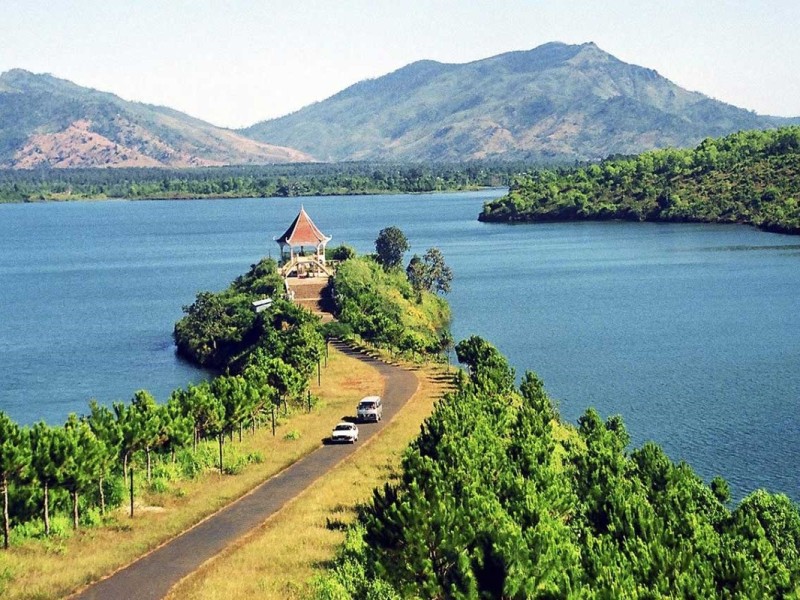
Discover Gia Lai’s Ethnic Villages
One of the most enriching experiences in Gia Lai is a visit to the region’s ethnic villages. The Jarai and Ba Na people, who have lived in the highlands for centuries, maintain a way of life that is deeply connected to their land and traditions. A visit to De K’Tu Village offers a unique opportunity to witness this culture firsthand. Here, visitors can explore the Rong House, a towering stilted communal house that serves as the cultural heart of the village.
The Jarai and Ba Na people are known for their music, dances, and oral traditions, which have been passed down through generations. Gongs, in particular, play a central role in their spiritual and cultural practices. These instruments are not just used for music but are also believed to carry the voices of their ancestors, connecting the living with the spiritual world. Visitors to these villages are often invited to participate in traditional ceremonies, offering a rare glimpse into the unique heritage of Vietnam’s ethnic minorities.
The Gong Culture: UNESCO Heritage of the Highlands
Gia Lai’s Gong Culture has been recognized by UNESCO as an intangible cultural heritage of humanity, highlighting its importance not only to the region but to the world. Gongs are considered sacred in the highlands, and their sounds are used to communicate with the spirit world during important events such as festivals, funerals, and harvest celebrations. This deep spiritual connection to the land and its people is what makes the gong culture so unique.
Visitors to Gia Lai can witness gong performances during local festivals or in village ceremonies, where the rhythmic beats of the gongs create a mesmerizing atmosphere. These performances are often accompanied by traditional dances, storytelling, and the sharing of local food, creating a communal experience that celebrates the heritage and identity of the highland people.
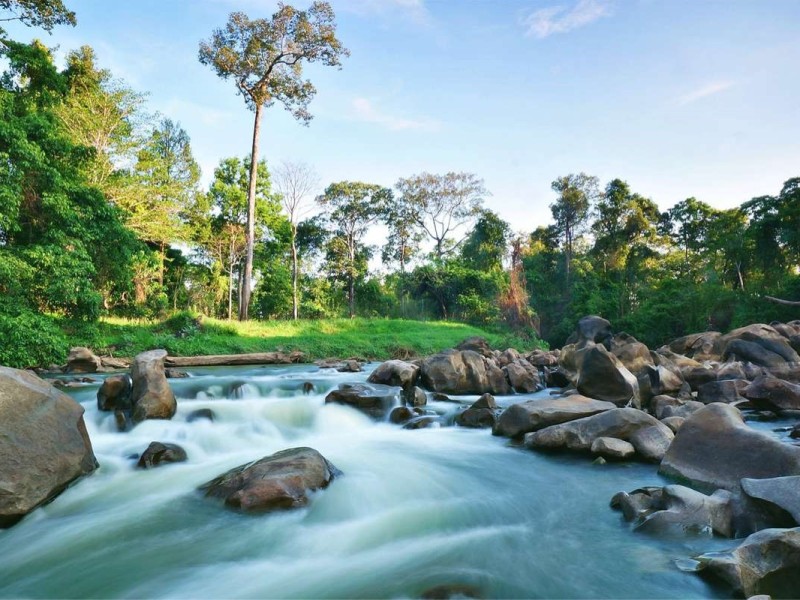
Create Lifelong Memories in Gia Lai
Visiting Gia Lai is not just about seeing new places; it’s about creating unforgettable experiences that will stay with you forever. Whether you’re looking for romance, family-friendly adventures, or a personal retreat into nature, Gia Lai offers something for everyone. The region’s pristine landscapes, cultural richness, and eco-tourism opportunities ensure that every traveler leaves with cherished memories. This stage will explore the various ways you can experience Gia Lai, offering detailed suggestions for couples, families, solo travelers, and eco-tourists.
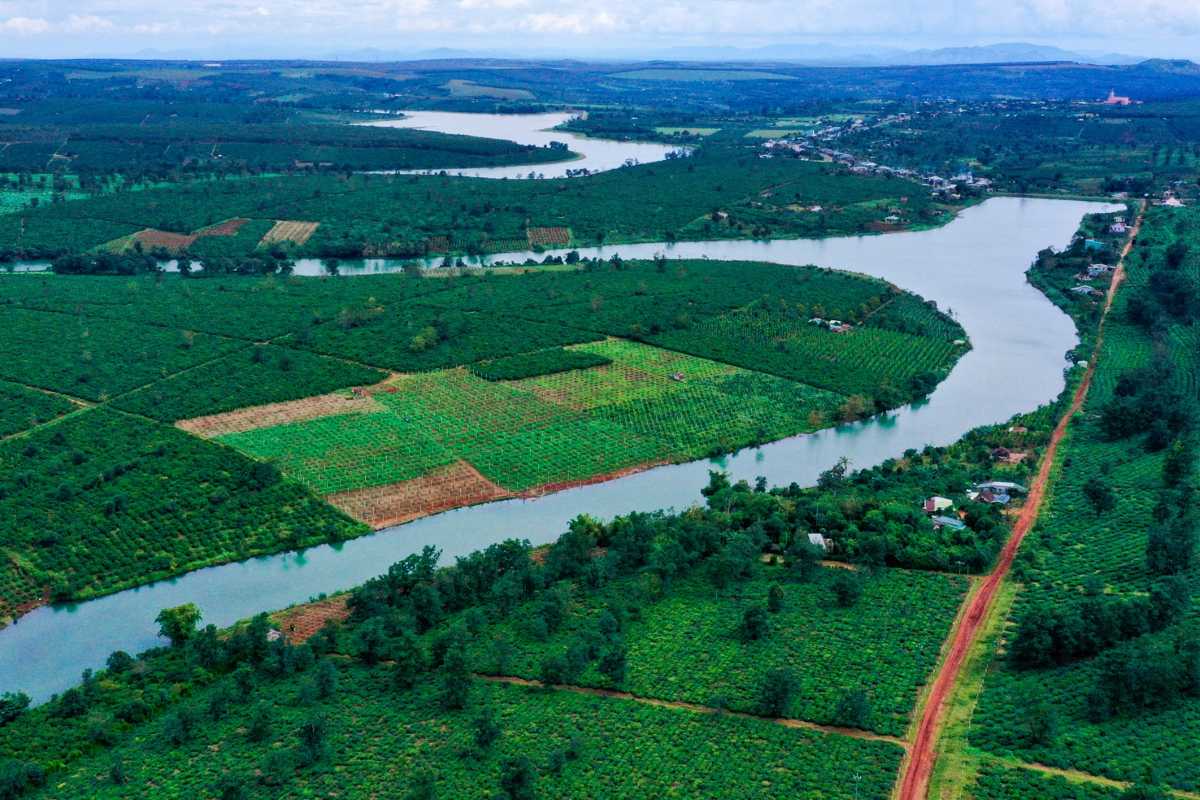
Gia Lai: A Destination for Romantic and Family Getaways
Whether you're seeking a romantic escape or a family adventure, Gia Lai provides the perfect backdrop for making lasting memories. Couples can find solace in the serene beauty of T’Nung Lake, where the calm waters reflect the rolling hills and create an idyllic setting for intimate moments. The tranquil environment allows you to connect not only with nature but also with each other, offering the chance to relax and unwind amidst breathtaking scenery.
For a more adventurous experience, couples can trek up Ham Rong Mountain, where the panoramic views at the summit make for the perfect spot to watch the sunset. The vibrant wildflowers that line the trails add to the romantic atmosphere, making it a must-visit destination for those looking to experience Vietnam’s natural beauty in a more intimate setting.
Families visiting Gia Lai will also find plenty to explore. One of the best options for a family-friendly outing is a wildlife expedition in Kon Ka Kinh National Park, where children can learn about the diverse flora and fauna of the region. The park’s well-maintained trails and guided eco-tours make it an ideal destination for families, offering the chance to witness rare species and immerse in nature. Whether it’s spotting colorful birds or hiking to one of the park’s towering waterfalls, the adventures here will leave both parents and children with memories of Vietnam’s Central Highlands.
Tailored Travel for Solo Explorers
For solo travelers, Gia Lai offers the peace and solitude that is often difficult to find in more crowded destinations. The region’s remote landscapes provide a sense of tranquility that allows for personal reflection and connection with nature. A trek to the majestic K50 Waterfall is one of the top experiences for solo adventurers. Hidden deep within the jungle, this waterfall is a secluded spot where you can appreciate the power and beauty of nature in complete solitude.
Another great option for solo travelers is to explore the untouched trails of Chu Dang Ya Volcano. This extinct volcano is covered in vibrant greenery, and the surrounding villages offer a glimpse into the traditional highland life. Solo adventurers can hike up the volcanic crater for stunning views or visit the nearby ethnic villages to learn about the local culture.
For those seeking guidance, local guides are available to help you navigate the best hiking trails and introduce you to the region’s hidden gems. Gia Lai’s welcoming locals and safe environment make it an excellent destination for those traveling alone, providing both adventure and relaxation in equal measure.
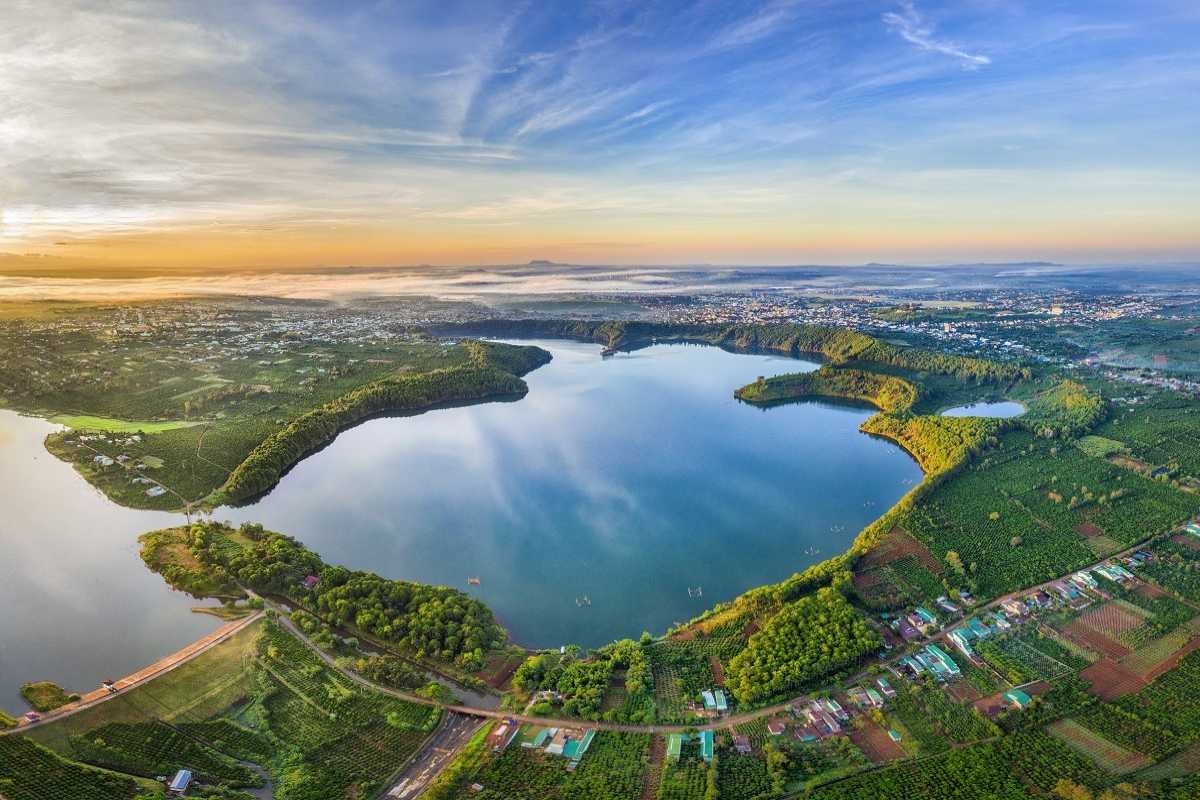
Why Gia Lai is Perfect for Eco-Tourism Enthusiasts
Gia Lai is rapidly becoming a go-to destination for eco-tourism enthusiasts. With its vast national parks, protected forests, and strong emphasis on sustainability, the region offers countless opportunities to engage in responsible travel while enjoying its stunning natural landscapes. Eco-tourists are drawn to Gia Lai not only for its biodiversity but also for its commitment to preserving the local environment and culture.
The Kon Ka Kinh National Park, in particular, stands out as a hub for eco-friendly tourism. With its wide range of ecosystems, including rare wildlife and unique plant species, the park is a model of conservation efforts. Visitors can join eco-tours that focus on the protection of endangered species, giving travelers the opportunity to contribute to conservation while exploring the park's incredible biodiversity.
In addition, the cultural aspect of eco-tourism in Gia Lai is equally compelling. The local ethnic communities, such as the Jarai and Ba Na peoples, are actively involved in promoting community-based tourism. Travelers are encouraged to engage with these communities through village tours that offer insight into their traditional way of life. This type of tourism not only benefits the local economy but also fosters a deeper understanding of the region’s cultural heritage.
How Gia Lai Promotes Sustainable Travel
Gia Lai is a leader in sustainable travel practices, with initiatives that focus on preserving both its natural environment and its cultural heritage. A visit to Gia Lai provides travelers with the chance to experience the region’s beauty while contributing to its conservation efforts. The region’s national parks and eco-tourism projects ensure that visitors can enjoy its natural wonders without harming the environment.
One of the key components of Gia Lai’s sustainable travel efforts is its focus on community-based tourism. In partnership with local villages, visitors are offered authentic experiences that highlight traditional practices while supporting the preservation of local customs. By staying in eco-friendly homestays, travelers can immerse themselves in the daily lives of the Jarai and Ba Na people, participating in activities such as traditional farming, cooking, and handicraft making.
Gia Lai’s emphasis on eco-tourism is also reflected in its conservation programs. The Kon Ka Kinh National Park and the Chu Mom Ray National Park are two areas where significant conservation efforts are underway. These parks are home to endangered species, and their protection is a priority for the local government. Visitors are encouraged to participate in eco-friendly activities, such as guided nature walks and wildlife observation, which minimize environmental impact while promoting awareness about the importance of conservation.
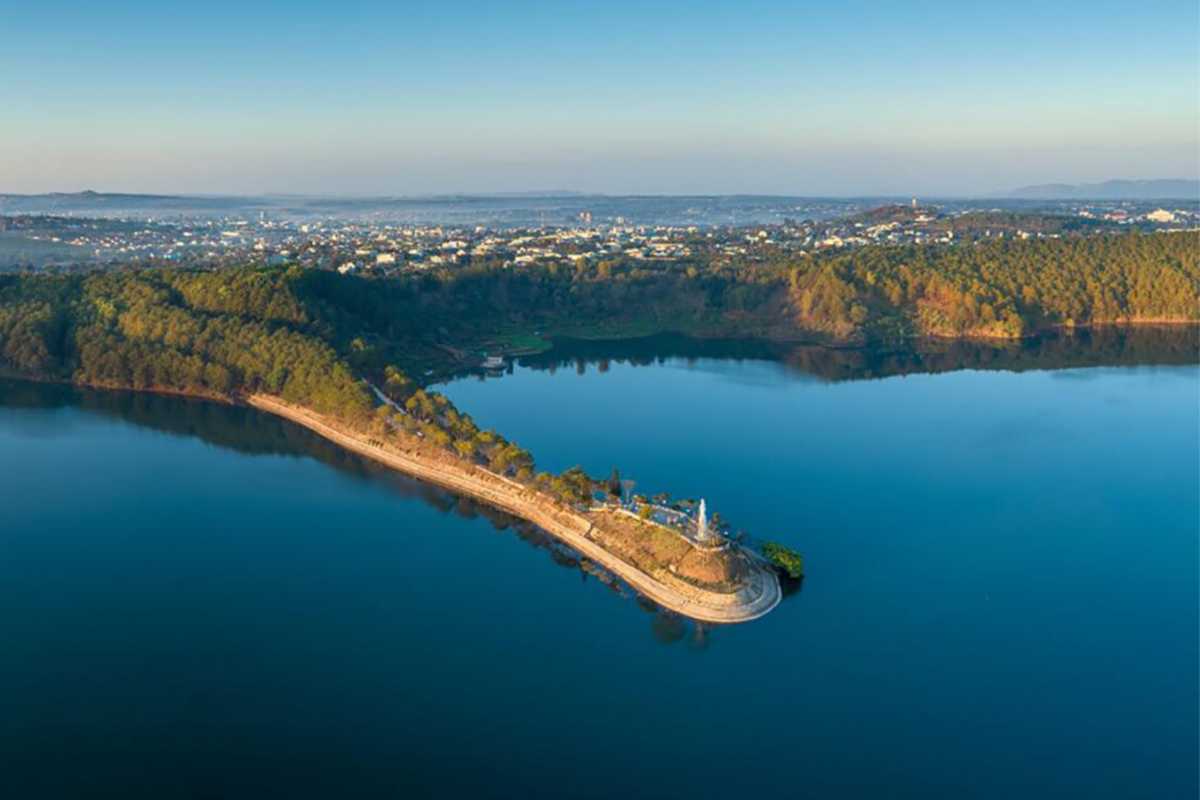
Plan Your Gia Lai Adventure Today
Gia Lai is a destination that promises unparalleled beauty, rich cultural experiences, and the chance to immerse yourself in Vietnam’s Central Highlands. Now that you've discovered the many wonders this region has to offer, it’s time to start planning your adventure. From transportation options to insider tips, here’s everything you need to know to make your journey smooth and memorable.
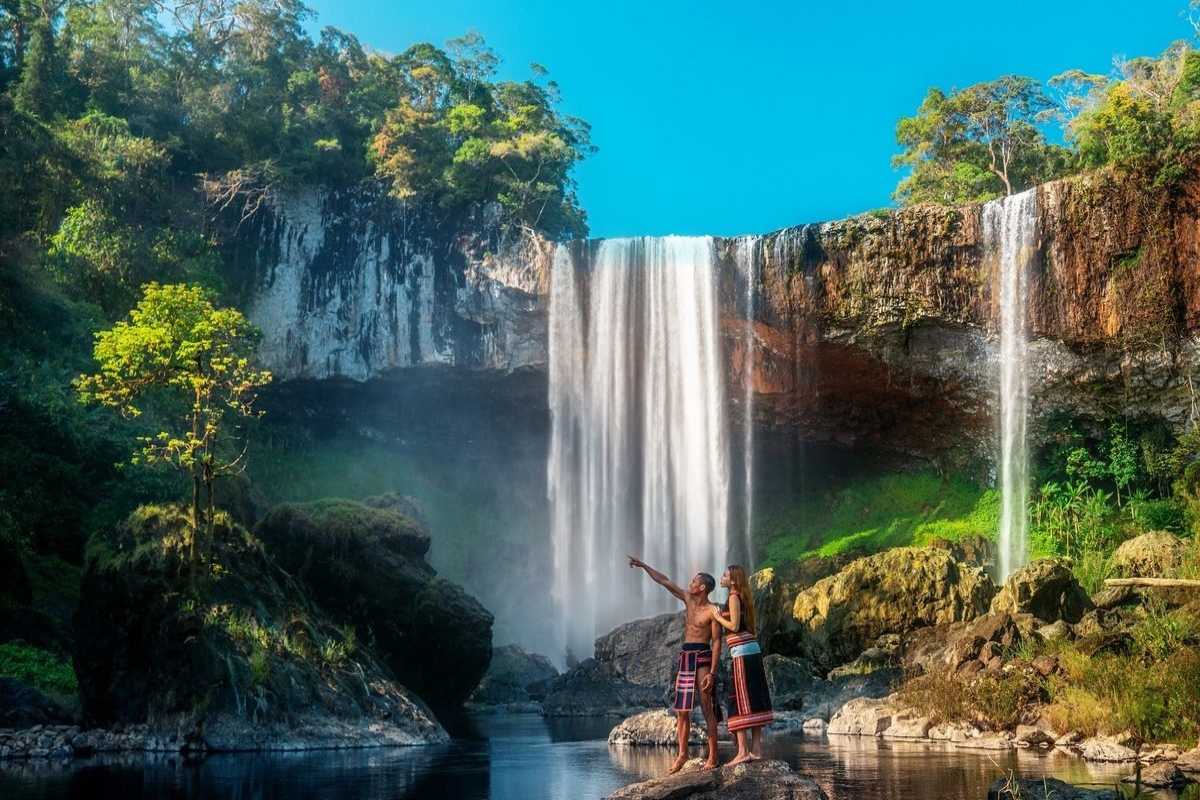
Transportation and How to Get Around
Getting to Gia Lai is both convenient and scenic. Pleiku Airport is the primary gateway to the region, with regular flights connecting it to major cities such as Hanoi, Da Nang, and Ho Chi Minh City. For those who prefer a more scenic journey, bus services from nearby provinces offer a picturesque route into the highlands. Once you’ve arrived, exploring Gia Lai is easy with several transportation options available. Motorbike rentals are a popular choice for independent travelers who want to explore at their own pace, while local taxis and guided tours provide flexibility for those looking for more structured itineraries.
Navigating the region’s attractions is straightforward, with clear signage and helpful locals eager to assist travelers. Whether you’re trekking through national parks or visiting cultural villages, getting around Gia Lai is a seamless experience, allowing you to focus on enjoying the stunning landscapes and unique cultural offerings.
Insider Tips: What You Need to Know Before Visiting
Before embarking on your Gia Lai adventure, there are a few practical tips that can enhance your experience. Many of the region’s attractions, such as Phu Cuong Waterfall and Kon Ka Kinh National Park, have modest entry fees that support conservation efforts, so it’s a good idea to have small denominations of cash on hand. Additionally, respecting local customs is important—especially when visiting ethnic villages. The Jarai and Ba Na communities value hospitality, and showing respect for their traditions will enrich your visit.
The best time to visit Gia Lai is during the dry season from November to April, when the weather is perfect for outdoor activities. However, if you’re interested in experiencing cultural festivals, consider visiting in November or December, when events such as the Central Highlands Gongs Festival take place. Lastly, consider booking guided eco-tours, which offer not only an immersive experience but also contribute to the region’s eco-tourism efforts, allowing you to support sustainable travel.
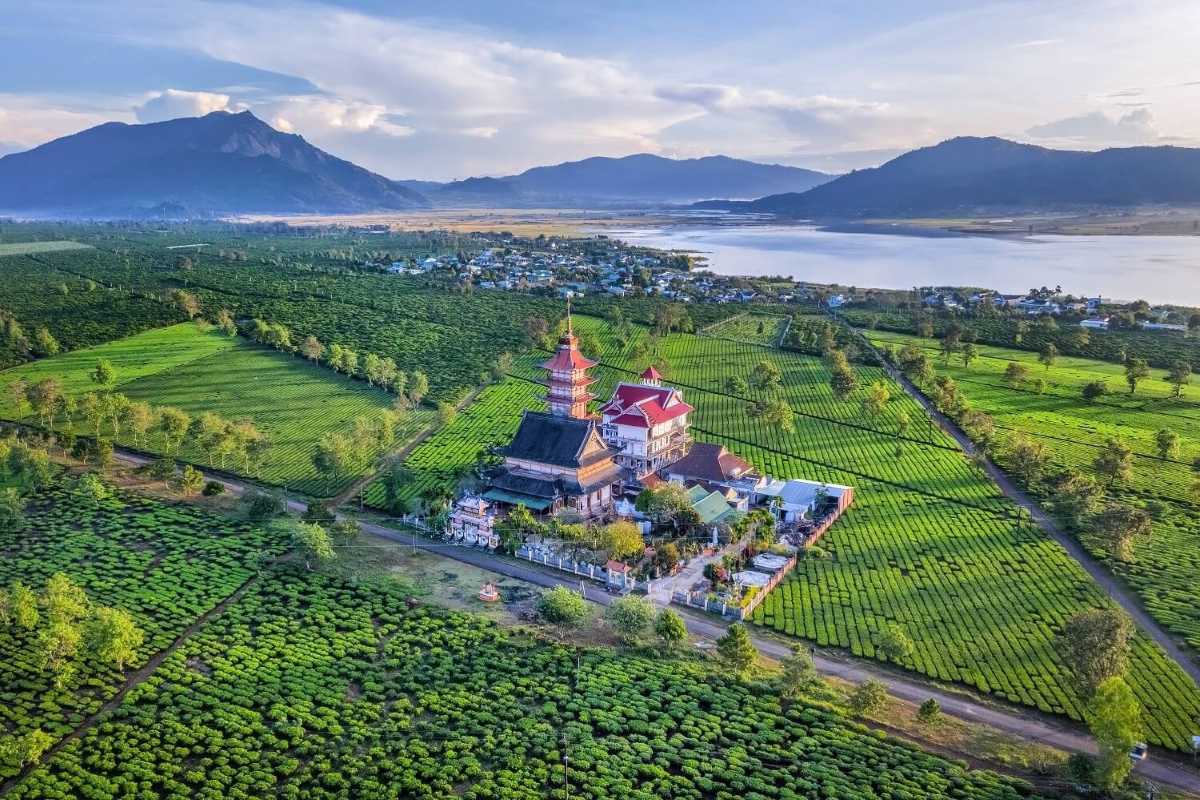
Where to Stay in Gia Lai
When it comes to accommodations, Gia Lai offers options for every budget and preference. For those seeking comfort and luxury, the Hoang Anh Gia Lai Hotel provides top-notch amenities with a central location in Pleiku, making it a great base for exploring the region’s attractions. If you prefer a more budget-friendly option, La MIA Lakeview is a popular choice, offering stunning views of T’Nung Lake and easy access to nearby natural attractions.
For travelers looking for a more authentic experience, homestays in ethnic villages are an excellent choice. Staying in a homestay allows you to live among the Jarai or Ba Na people, participate in their daily routines, and gain a deeper understanding of their culture. These accommodations often include meals made from local ingredients and provide the perfect opportunity to experience the warmth of highland hospitality.
Best Homestay Experiences in Gia Lai
Choosing to stay in a homestay in Gia Lai offers a one-of-a-kind experience. Many of the homestays are traditional stilt houses, where you’ll be able to sleep under the same roof as a local family and enjoy home-cooked meals. The Jarai and Ba Na people are known for their hospitality, and guests are often invited to participate in communal activities such as cooking, farming, and even musical performances with gongs. This type of accommodation not only supports the local economy but also provides a rich cultural exchange, giving visitors the chance to live as the locals do.
The homestay experience is ideal for travelers who want to truly immerse themselves in the culture of the highlands and build lasting connections with the communities they visit. Whether you’re traveling solo, as a couple, or with family, staying in a homestay will leave you with memories of shared meals, traditional customs, and heartfelt conversations that you won’t soon forget.
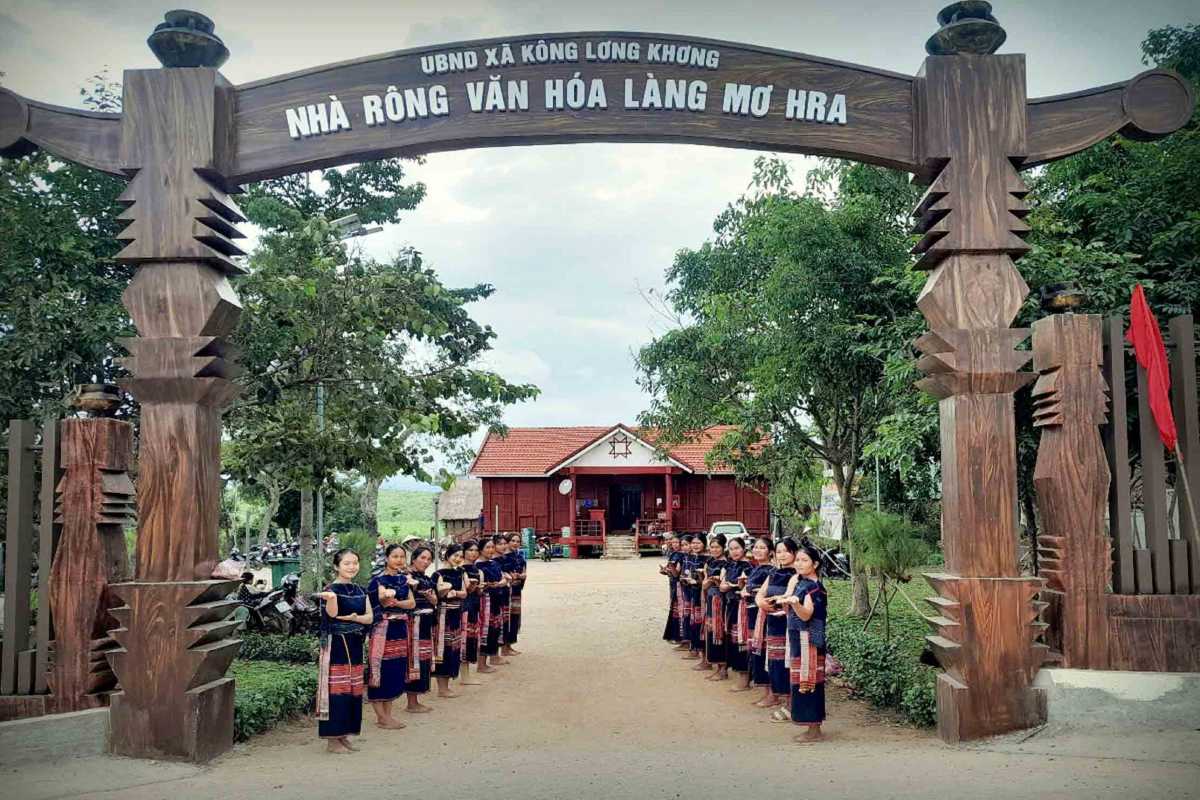
Final Thoughts: Why Gia Lai Should Be Your Next Adventure
Gia Lai offers travelers an extraordinary opportunity to experience the true essence of Vietnam’s Central Highlands. From its unspoiled natural landscapes, like T’Nung Lake and Ham Rong Mountain, to its rich cultural heritage found in the ethnic villages, Gia Lai is a destination that promises both adventure and tranquility. For those who seek to escape the crowds and explore a side of Vietnam rarely seen by tourists, Gia Lai provides a journey that is both authentic and inspiring.
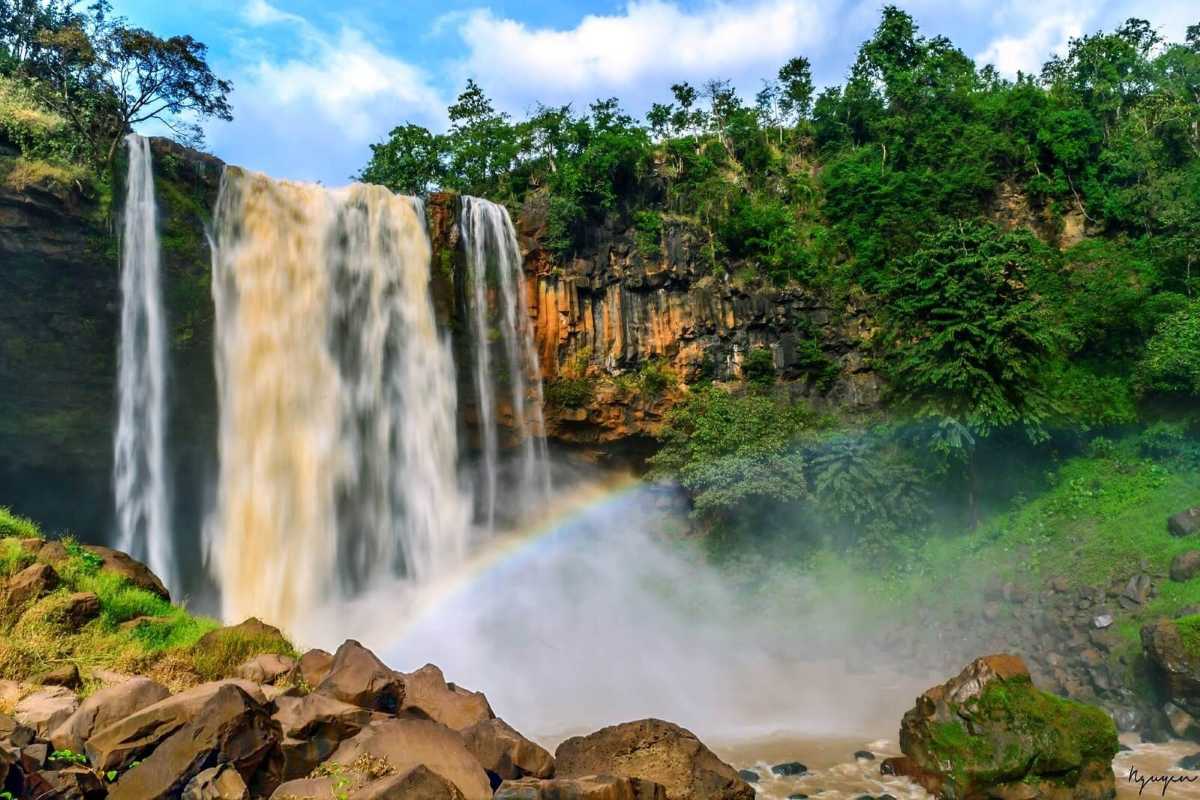
Gia Lai: The Journey That Awaits You
As you plan your next adventure, consider Gia Lai for its ability to provide a unique blend of natural beauty and cultural immersion. Whether you're hiking through the forests of Kon Ka Kinh National Park, enjoying the calm waters of T’Nung Lake, or engaging with the local Jarai and Ba Na people in their traditional villages, Gia Lai offers an experience that goes beyond typical tourism. The landscapes will take your breath away, the people will leave a lasting impression, and the memories you make will stay with you forever.
Now is the time to take action. Start planning your trip to Gia Lai today and uncover the hidden gem of Vietnam’s Central Highlands. With its eco-friendly travel options, unique cultural encounters, and stunning natural beauty, Gia Lai is the perfect destination for your next unforgettable journey.
Mike Nguyen
Travel Advisor
Mobile: +84917506881 (whatsapp available)
Email: contact@asiatravellinks.com
Faqs
Gia Lai is known for its stunning natural landscapes and rich ethnic culture in Vietnam’s Central Highlands. It offers volcanic lakes, lush forests, and vibrant traditions of the Jarai and Ba Na peoples.
This region features the tranquil T’Nung Lake, wildflower-covered mountains like Ham Rong, and biodiverse national parks such as Kon Ka Kinh. Visitors appreciate its blend of nature and cultural heritage away from mass tourism.
Explore the peaceful highlands where nature and indigenous traditions create a unique travel experience.
You can reach Gia Lai by flying into Pleiku Airport, which connects regularly to Hanoi, Da Nang, and Ho Chi Minh City. This is the fastest way to access the region.
From the airport, local taxis or motorbike rentals provide transport to key attractions. Alternatively, long-distance buses run from nearby provinces, offering scenic land routes.
- Book flights early for better fares and availability.
- Arrange transfers in advance for convenience.
- Consider renting a motorbike to explore independently once there.
Plan your transport to make your trip to Gia Lai smooth and efficient.
The best time to visit Gia Lai for outdoor activities is during the dry season, from November to April. This period offers pleasant weather ideal for trekking, cycling, and cultural tours.
November and December bring colorful wildflowers and festivals, while February to March features blooming coffee plantations.
- Avoid the rainy season (May to October) when trails may be slippery.
- Early mornings and late afternoons are best for hiking to avoid midday heat.
Visiting during these months lets you fully enjoy Gia Lai’s natural beauty and cultural events.
Yes, most national parks and protected areas in Gia Lai charge modest entry fees to support conservation efforts.
For example, Kon Ka Kinh National Park requires a small admission fee, usually a few US dollars per person.
- Fees help maintain trails and protect wildlife habitats.
- Guided tours often include entry costs in their packages.
- Carry small cash as card payments may not be accepted.
Understanding fees helps you prepare and contributes to preserving Gia Lai’s environment.


